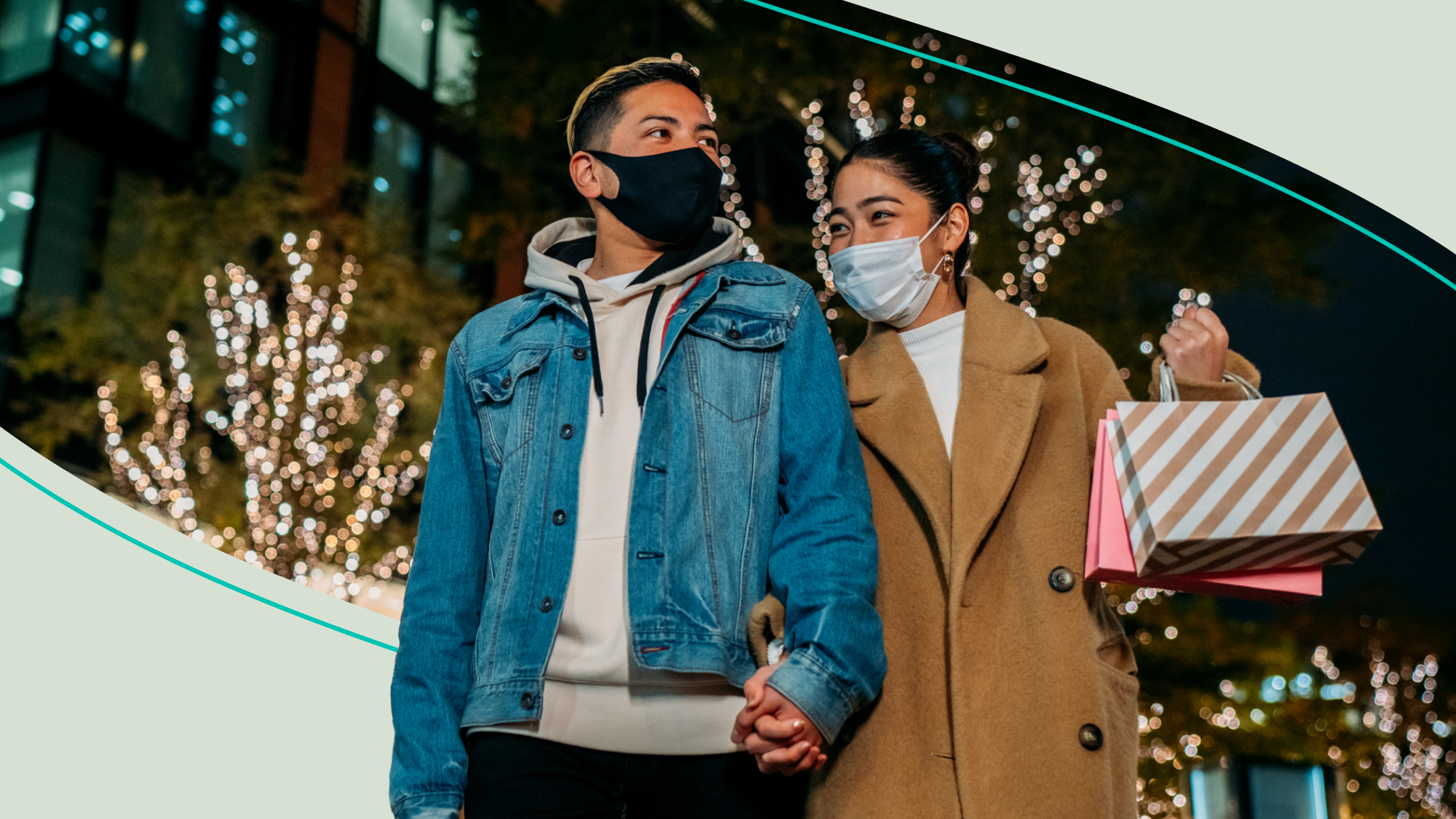You might be going ho-ho-home for the holidays. But before you do that, health experts have some safety guidelines that you’ll want to check twice.
About 60% of the US population is fully vaxxed against COVID-19. And tens of millions of Americans are eligible for a booster shot. But, reminder: we’re still in the middle of a pandemic. And the new Omicron variant is spreading around the country — and world. All of which could make holiday planning complicated.
How to Stay Safe While Celebrating the Holidays
The CDC’s top rec: get vaxxed. The agency says it’s “the best way to minimize COVID-19 risk,” especially as different generations get together for the holidays. Here’s what else you can do to stay safe when celebrating with…
Family and friends…Masks are still the best accessory for everyone two years and older. Especially for those who are unvaxxed. And even those with a vax card should consider a mask if celebrating in an area with high transmission rates. Outdoor and well-ventilated spaces are best for big meet-ups. But if you’re sick, stay home and Zoom into the festivities. And if you might have been exposed to the virus, health experts recommend getting tested.
Psst...If you’re planning to host or attend a celebration, you might want to ask friends and family about their vax status. We’ve got tips on how to do that here.
Those at higher risk of COVID-19...Including those who are 65+. Or who have underlying medical conditions (weakened immune system, heart conditions, diabetes). Fully vaxxed people who fall under this category may still be vulnerable to the virus. So, it’s important to take basic preventative measures. Btw, people who are in this group are eligible for a COVID-19 booster shot. We’ve got more on that here.
Young children...Many are now eligible for a vaccine. The FDA and CDC have given Pfizer/BioTech’s vaccine the green light for emergency use in kids aged five to 11 — which are available now. (Remember: Starting in the summer, adolescents aged 12-15 became eligible to get a dose of Pfizer's shot.)
In the meantime, the CDC recs that unvaxxed family members — including children ages two and older — wear a mask indoors. If younger than two, it’s best to limit visits with people who aren’t vaccinated. And keep children at a safe distance from others in public.
Oh, and health experts have given people the 'all clear' to get vaxxed against COVID-19 and the flu at the same time. And says curbside or drive-thru vax clinics might be the best way to go. Especially in communities with high transmission of COVID-19. Oh, and... health experts have given people the 'all clear' to get vaxxed against COVID-19 and the flu at the same time.
What about travel?
If you’re vaccinated, there are steps you should still take to stay safe. Wear a mask on public transportation (it’s a requirement). And monitor yourself for any COVID-19 symptoms after your trip. The CDC suggests that those traveling with unvaxxed kids for the holidays take short road trips. And if you have to fly, consider picking a flight that doesn’t require layovers. (Also, watch out for increased flight cancellations.) If you’re unvaxxed, get tested before and after your trip to ensure you’re good to go. And, when in doubt, follow the 2020 motto: mask up, social distance, and wash your hands.
For those saying 'see U(SA) later,' here are some tips for staying safe…
Review the State Dept’s travel advisories. Officials are warning against travel to several countries due to COVID-19. Check the list out here.
Fully vaxxed people who’ve been exposed to the virus don’t have to quarantine and can travel. That is unless they have COVID-19 symptoms. Then, health officials say to 'isolate stat.' Do not travel. (Remember: It may help to check in on your destination’s travel rules.) And call your doctor. Stay home for 14 days after exposure. Travel tip: If you need to get to a doctor, opt for an ambulance or private vehicle. No public transportation, if you can.
The testing guidelines for Americans returning to the US changed on Dec. 6. Those traveling internationally to the US must have a negative COVID-19 test within 24 hours of departure — regardless of vaccination status. Travelers who recently recovered from COVID-19 must show two items: A positive test that's less than 90 days old. And a letter from a licensed doc or public official stating you're now clear to travel. Children under two can skip this requirement.
If you have family or friends visiting from abroad, heads up: On Nov. 8, the US welcomed fully vaccinated travelers from more than 30 countries. Here’s what they should know:
Vaccines that are authorized by the FDA or World Health Organization are fair game.
There are a few exemptions from the vax requirement, including those under 18.
All international travelers — not including children under two — still have to show proof of a negative COVID-19 test to airlines before boarding. (Reminder: Citizens traveling to the US must get a negative COVID test within one day of departure. Regardless of vaccination status.)
theSkimm
The holiday season is a time to be merry with your loved ones. But during a pandemic, extra precautions and planning are necessary. After all, health and good company can make the best gifts.
Updated on Dec. 8 to include new CDC testing requirements for inbound international travel.
Updated on Nov. 8 to reflect that fully vaxxed international travelers can come into the US.
Live Smarter
Sign up for the Daily Skimm email newsletter. Delivered to your inbox every morning and prepares you for your day in minutes.
